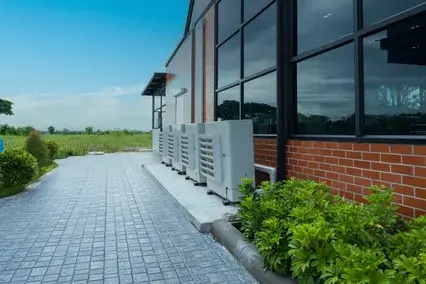Heating and Cooling
6 Things That Could Be Stopping Your Outside AC Unit

6 Common Causes of Outside AC Unit Issues and How to Fix Them
If your outside AC unit isn’t turning on, you might be facing some common outside AC unit issues. These problems can range from simple to complex. Luckily, many can be checked and fixed before calling a professional. Understanding these causes helps you avoid discomfort and costly repairs during hot months.
What Are the Most Common Outside AC Unit Issues?
Outdoor AC units work alongside indoor components to keep your home cool. If the unit doesn’t start, several factors could be responsible. From power problems to mechanical failures, identifying the cause quickly helps restore comfort.
1. Thermostat Problems Can Stop Your AC Unit
First, ensure your thermostat is on and set to cool. Sometimes, someone changes settings or turns it off without realizing. If the thermostat uses batteries, replace them with fresh ones. Faulty wiring or pests chewing wires could also cause issues needing professional help.
2. The Shut-Off or Emergency Switch Might Be Off
Your outdoor unit has a separate power source, including an emergency switch near it. Check that this switch hasn’t been accidentally flipped off. Also, some units have a reset button outside. If not, try resetting the whole system by turning off the breaker or thermostat for one minute, then turning it back on.
3. Circuit Breaker or Fuse May Be Tripped
A common outside AC unit issue involves blown fuses or tripped circuit breakers. This happens when circuits overload or wires wear out. Head to your circuit panel and check for tripped breakers. Turn them off and on again carefully. If the breaker trips immediately, call an electrician to avoid further damage.
4. Capacitor Failure Can Prevent the Unit from Starting
The capacitor provides the energy needed to start your outdoor unit’s fan. If you hear buzzing or the fan doesn’t spin, the capacitor might be failing. These parts wear down over time or after power surges. Testing the fan by spinning it manually can help identify capacitor problems. If it doesn’t spin, the capacitor probably needs replacement by a professional.
5. Condensate Drain Line Clogs Can Shut Down the AC
The condensate drain line removes water produced during cooling. High humidity and algae buildup can clog this line, triggering a safety switch that stops the AC. You can try clearing the clog with a wet/dry vacuum. If this doesn’t work, call a technician to prevent water damage and system failure.
6. Low Freon Levels Cause Cooling Failure
Freon cools the air passing through your system. If your unit is low on freon, it usually signals a leak. Watch for ice buildup on the unit, warm air from vents, or hissing sounds. Since handling refrigerants requires a licensed professional, contact an HVAC expert if you suspect this issue.
How to Address Outside AC Unit Issues Safely
Many outside AC unit problems require professional help, especially electrical or refrigerant-related ones. However, you can prevent some issues by regularly inspecting your unit. Clear debris, check switches, and test the thermostat frequently. Also, scheduling yearly maintenance ensures your system runs smoothly.
Conclusion: Stay Cool by Troubleshooting Outside AC Unit Issues
Troubleshooting outside AC unit issues early can save time, money, and discomfort. Simple fixes like checking switches or resetting breakers often restore function quickly. Meanwhile, stay comfortable by using portable fans or indoor air conditioners during repairs. For expert assistance, always consult certified HVAC professionals.
